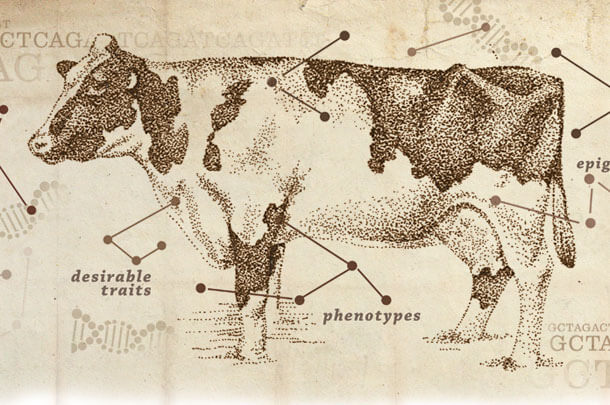
Livestock farming is one of the essential sectors in Indonesia. Currently, the government has launched numerous programs to improve the quality and quantity of livestock in Indonesia, particularly focusing on cattle to achieve self-sufficiency in animal protein. One of the efforts to achieve this goal is through selection programs. Selection is crucial to enhance livestock quality in terms of production and reproduction. Selection, in essence, involves choosing animals with the best genetic advantages or above-average qualities from the population, thus creating the selected animals. Now, there is a term in selection programs that is critical for the success of the selection program, and it's called Estimated Breeding Value or EBV.
What is EBV?
EBV, or Estimated Breeding Value, is a measure that reflects the ability to pass down genetic traits from parents to their offspring. In calculating EBV, the performance of individuals within a group is directly compared to the average performance of that group, provided that the measured performance is within the same age, management, and gender category.
EBV is expressed in measurement units for each quantitative trait to be displayed. For example, if the EBV for weaning weight of cattle A is +30 kg, it means that cattle A has a genetic advantage of 30 kg more in weaning weight compared to the population average. Another example is the EBV for mature equivalent weight of cattle B, which is -40 kg, signifying that cattle B has a genetic disadvantage of 40 kg compared to the population.
Why Use EBV?
Many economically valuable traits in livestock are not visibly apparent during the selection process. EBV is a proven tool for predicting economically valuable traits such as growth rate, reproductive efficiency, carcass quality, and disease resistance.
Desired Traits and EBV Values for Selection
Selection should not only consider the EBV value for a single trait but also take into account other relevant EBV values based on our selection goals. For instance, if the goal is to obtain cattle with good productivity, then we should consider not only the EBV for birth weight but also weaning weight, mature weight, and even the ease of calving (Calving ease) EBV. Below are traits commonly used in selection:
- Calving ease (%) represents the ease of calving, birth weight, and gestation length. Positive EBV values in this trait indicate good calving ease or minimal difficulty during birthing.
- Birth Weight (kg) refers to the weight of a calf shortly after birth. Besides birth weight, other parameters used to measure productivity are weight at 200 days, 400 days, 600 days, and mature weight.
- Scrotal Size (cm) is measured when the bull is 400 days old and reflects the reproductive capacity of the male, especially in semen production. Scrotal size is also positively correlated with mature age.
- Milk (kg) represents the mother's ability to produce milk. This parameter can also be used for bull selection, indicating that the female offspring from a particular bull has the milk production capability as per its EBV.
- Days to Calving (days) reflects the fertility of the animal. It is measured from the first mating to calving. Negative Days to Calving values signify higher fertility.
SHARE



